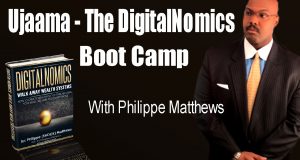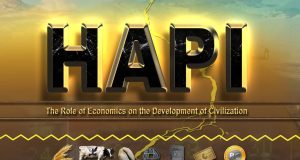
Listen to this live interview with Natalie Pace on Occupy Wall Street!
 Discover what the media does not want you to know and is not reporting in this exclusive interview with Natalie Pace; author of You Vs. Wall Street: Grow What You’ve Got; Win Back What You Lost. I’ve been adding a splash of green to Wall Street and transforming lives on Main Street for the last decade.
Discover what the media does not want you to know and is not reporting in this exclusive interview with Natalie Pace; author of You Vs. Wall Street: Grow What You’ve Got; Win Back What You Lost. I’ve been adding a splash of green to Wall Street and transforming lives on Main Street for the last decade.
Occupy Wall Street Update.
by Natalie Pace.
Wall Street Remains Barricaded.
By now, most Americans have seen the startling image of a police officer pepper-spraying a line of seated, non-violent and unarmed students at UC Davis, and, prior to that, police officers doing a similar spraying of young women penned in by police fencing in lower Manhattan. The world knows the name of Scott Olsen, a member of Iraq Veterans Against the War, who suffered a skull fracture and loss of language (temporarily) after being hit by a projectile in a police tear gas and rubber bullet raid on Occupy Oakland, on October 25, 2011. (Click to see Scott Olsen speaking in his first television interview on The Ed Show, from November 30, 2011.)
All of these events have only raised the profile and popularity of the Occupy Wall Street “99%” movement — a movement that is best characterized simply as anti-oligarchy. According to the OccupyWallSt.org website, the movement is “is fighting back against the corrosive power of major banks and multinational corporations… and aims to fight back against the richest 1% of people that are writing the rules of an unfair global economy that is foreclosing on our future.”
Just How Powerful is OWS?
OccupyWallSt.org is rapidly becoming one of the most trafficked websites in the world. (Some enterprising venture capitalist might already be seeking to monetize those eyeballs.) On November 19, 2011, the UC Davis pepper spraying event trended the highest search on Google. Add: AOL’s data lists Occupy Wall Street as the #8 most popular news search, behind Osama Bin Laden’s death, the Penn State scandal, Arab Spring, the Japanese Earthquake, the Royal Wedding, Gabrielle Giffords’ shooting and Casey Anthony. Through comScore Inc. declined to provide traffic data for the site, Alexa.com ranks OccupyWallSt.org as #1,556 most popular site in the U.S., with 8,612 sites linking in. That’s not quite as popular as Oprah or The Daily Show, but 5X more popular than Bill O’Reilly, 23X more visited than the official Tea Party website and almost 100X more trafficked than SarahPac.com (Sarah Palin’s website).
On November 17, 2011, Occupy Wall Street celebrated their two-month anniversary with an impressive feat. An estimated 30,000 protesters marched across Brooklyn Bridge. (Click to watch video footage of the Occupy Wall Street 2-month anniversary march, including a “Bat Signal.”)
Even though the movement is peaceful, the NYPD certainly considers Occupy Wall Street to be a threat. Wall Street has been off limits to the public since Day One of the movement. Beginning on September 17, 2011, the NYPD barred entry on Wall Street to everyone except residents and workers with, street lifters, police on horseback, barricades, block sculptures and police zones. The last time Wall Street was so closely guarded was in the wake of 9.11.
Occupy Wall Street began in Zuccotti Park in lower Manhattan, but it has spread to over 100 American cities and 1500 cities globally. Most encampments include tents, tarps and semi-permanent residents who meet daily in General Assemblies and march, typically alongside police reinforcements, to protest the corrupt 1%. One of the most popular refrains of the movement continues to be, “Banks got bailed out; we got sold out,” and one of the symbols is an American flag with the names of major corporations taking the place of the stars.
Protest marches occur daily around the world in support of people who have had their homes foreclosed, in support of workers who have had benefits reduced and salaries stagnate and against war, big oil, big pharma and more. On November 30, 2011, Occupy Wall Street protested “War Profiteers” at the 17th annual Aerospace & Defense Finance Conference in New York City. On November 20, 2011, there was a 24-hour drum circle jam session outside Mayor Bloomberg’s residence near Central Park. On December 2, 2011 in Times Square,
Occupy Broadway will fill the streets with artists, musicians and actors, in the hopes that “New York re-imagines itself as a work of art, rather than a retail shopping mall.”
And that is another unique aspect to the movement. The protesters are as serious about the arts as they are their politics. According to Justin Wedes, a diehard who has been with the movement since Day One, who spoke to me on September 21, 2011 (Day Five), “Above everything, what unites us is that we want to find unity and we want to find agreement about changes that need to occur in our society in order for it to be more equitable, in order for it to be more just, in order for it to be more participatory, and more artistic and more beautiful.” Sounds utopian to jaded, Recession-weary citizens, but who really doesn’t desire a cleaner, greener, healthier, more artistic world where the banksters aren’t tossing families out of their homes and running amok with our tax dollars?
Liberty Square in Lower Manhattan
The pepper spray and rubber bullet clashes with police have certainly been less than beautiful, but the protestors remain committed, united and strong. On November 15, 2011. NYPD officers swept through Liberty Park (Zuccotti Park) at 1:00 a.m., tearing down tents and tarps, confiscating bikes, books, instruments, generators, computers, heaters and sleeping bags. A perimeter of barricades was put up, so that everyone must go through a narrow opening, monitored by police, to enter the park. Large bags, instruments and other “prohibited” items are not allowed. Protesters are no longer encamped, but the drumming and dancing and General Assemblies continue, with diehards taking shifts occupying the park. Other geeks and techies have secured more comfortable winter quarters close by in their #OccupiedOffice. And the movement remains focused on targeted protests across America, using the Internet to get information out to sympathetic citizens.
The “99%” Occupy Wall Street movement is too diverse to have a cohesive statement, which may limit how effective they can be in influencing the powers they are protesting against, however, the central message remains that they will “no longer tolerate the greed and corruption of the 1%.” The most popular areas of consensus tend to be around sustainable energy, sustainable food, natural health remedies, anti-war, anti-corruption, anti-greed — and drumming and the arts.
Though some people in the movement are definitely socialist and unions have attempted to ally themselves with Occupy Wall Street, there are also many capitalists, economists and Wall Street traders in the movement, who think that cronyism economics has corrupted the free markets. General Assemblies allow for everyone to have a voice, though the audience can weigh in if they believe the speaker has gone off point, if they disagree, or with “up sparkles” (waving fingers) if they strongly support what is being said. Most “spokespersons” for the movement are quick to advise that they “speak for themselves and not the movement.”
Perhaps the biggest question (and the biggest hope for Mayor Bloomberg) is whether or not the movement will survive the dead of winter. #OccupiedOffice certainly answers some of that question. Other solutions that have been discussed include “hibernating” to re-emerge stronger in Spring and building igloos in Liberty Square.
One thing is for sure. Occupy Wall Street, like the Arab Spring, is a very popular movement born of the people. It is a loud cry for greater democracy, less corruption and shared prosperity. And, based on the rapid globalization of this cry and the far-reaching alliances that have sprung up in only two months, it is unlikely to go away until at least some of its aims are achieved.
If you wish to read my initial report from Day One of the Movement, go to HuffingtonPost.com/Natalie-Pace and read “NYPD Shuts Down Wall Street.” I have also uploaded videos of various protesters, in their own words, on my YouTube channel at YouTube.com/NataliePaceDOTCOM. There you’ll find war veterans, sexagenarians, BAs, BSs, greenies, mothers and more… In my pretty extensive firsthand experience with both Occupy Wall Street and Occupy LA, students are slightly more than half of the people assembled in the Occupy Wall Street movement. However, as the search trends show, the movement has hit the mainstream in a very large way.
About Natalie Pace:
Natalie Pace is the author of You Vs. Wall Street. and Put Your Money Where Your Heart Is, and the founder and CEO of the Women’s Investment Network, LLC. She is a blogger onHuffingtonPost.com, and a repeat guest on national television and radio shows such as Good Morning America, Fox News, CNBC, ABC-TV, Forbes.com, NPR and more. As a strong believer in giving back, she has been instrumental in raising multi-millions for public schools, financial literacy, underserved women and girls and the arts worldwide. Follow her on Facebook.com/NWPace. For more information please visit NataliePace.com.

 Philippe Matthews Show Guru Advice, Author Reviews, Tech Reviews, Entertainment News
Philippe Matthews Show Guru Advice, Author Reviews, Tech Reviews, Entertainment News






